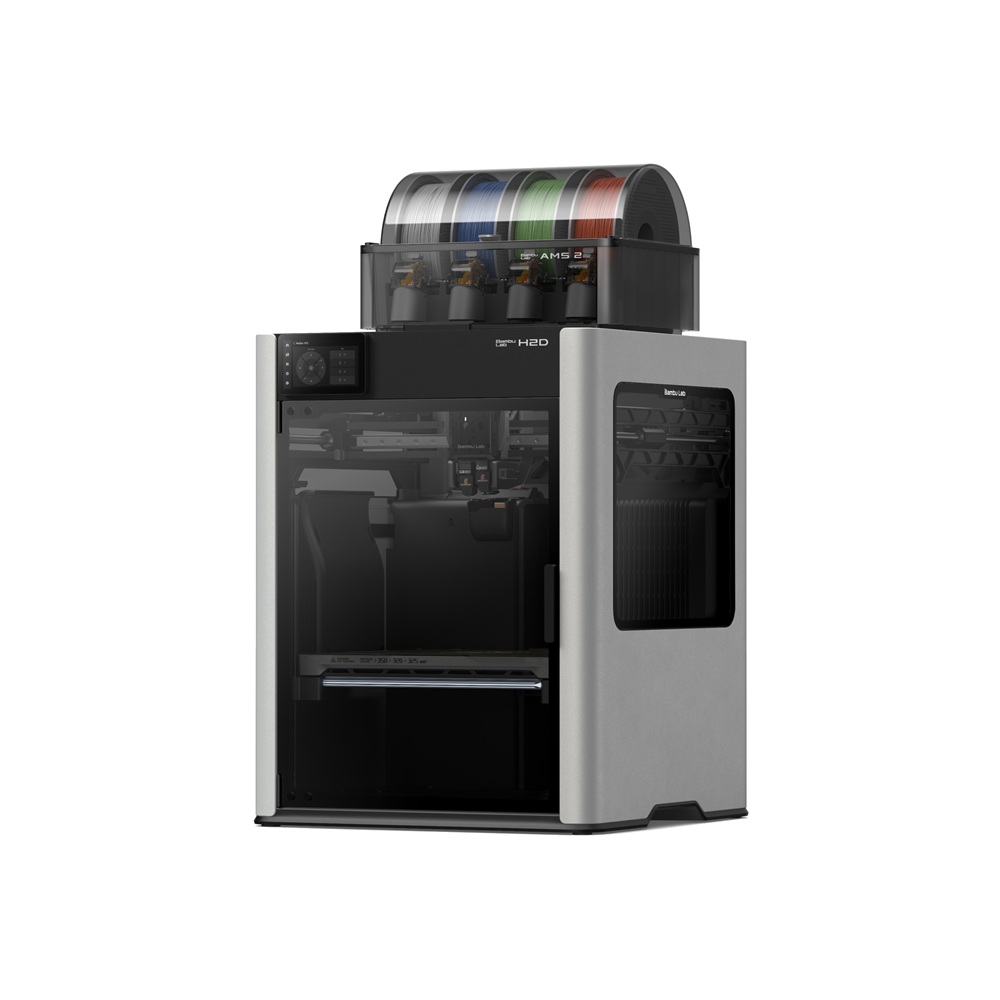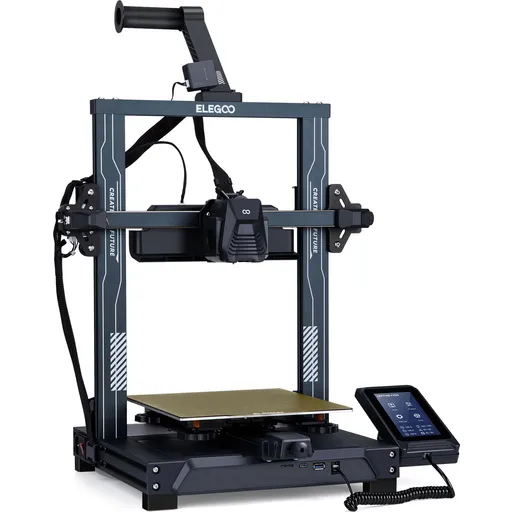Compare H2D vs Neptune 4 PRO
Comparison between the best 3D printers
Choose the best 3D printer at the best price. The cheapest 3D printers are here.
Buy a 3D printer here with 3D Fila.
 |
 |
|
| Model | H2D |
Neptune 4 PRO |
| Printing Material | Filament | Filament |
| Buy Filament for Bambu Lab H2D | Buy Filament forElegoo Neptune 4 PRO | |
| Estimated price | $1899,00 | $359,00 |
| Manufacturer | Bambu Lab | Elegoo |
| Release Year | 2025 | 2023 |
| Print Volume [mm] | 350x320x325 | 225x225x265 |
| Printer Size [mm] | 492x514x626 | 475x445x515 |
| Weight [kg] | 42,3 | 8,9 |
| Power Loss Recovery | YES | YES |
| Enclosed printer | YES | NO |
| Bed Leveling | Automatic | Automatic |
| Filament End Sensor | YES | YES |
| Bed type | Heated | Heated |
| Power supply system | Direct Drive | Direct Drive |
| Standard nozzle | 0,4 | 0,4 |
| Maximum Nozzle Temperature [°C] | 350 | 300 |
| Maximum Bed Temperature [°C] | 120 | 110 |
| Maximum printing speed [mm/s] | 600 | 500 |
| Filament holder | YES | YES |
| Camera for supervision | YES | YES |
| Recommended filaments | PLA, PETG, ABS, ASA, TPU, PVA, Nylon (PA) | PLA, PLA+, TPU, PETG, Nylon, ABS |
| Recommended slicers | Bambu Studio | Bambu Studio, Super Slicer, Cura, Prusa Slicer, Orca |
| Maximum Resolution [mm] | 0,01 | 0,1 |
| Processor | ARM 64 bit | |
| Display | Touchscreen 5'' | Touchscreen 4,3'' |
| Power Supply | 310 W | |
| Connectivity | Wifi, Bambu bus, Cartão SD | USB, microSD |
| Operating systems | Windows, Mac, Linux | Windows, Linux, Macbook |
| Date of registration in the system | 2025-03-31 | 2024-07-02 |
| Release date | 2025 | 2023 |
| Extra features | Bambu Labs H2D combines high-speed 3D printing with a chamber heated up to 65 °C, dual extrusion with automatic nozzle switching, an AMS for filament drying and exchange, and AI sensors that detect failures. It offers optional laser and digital cutting capabilities, features intelligent calibration through computer vision, vibration control, enhanced fire safety, and real-time camera monitoring. | The Elegoo Neptune 4 Pro stands out for its advanced features, including pre-installed Klipper firmware, a dual-gear direct extruder with a 5.2:1 ratio, a high-temperature nozzle (up to 300°C), a flexible magnetic PEI platform, efficient cooling fans, and a 121-point auto-leveling system. The printer also features a 4.3-inch touchscreen interface, dual linear bars on the X and Y axes, and a segmented heated bed for energy savings. |
| Support for multiple colors and materials (AMS and CFS) | YES | NO |
Notes * |
||
| Cost-benefit | 7 / 10 | 7 / 10 |
| Hardware | 8 / 10 | 3.2 / 10 |
| Tela | . | . |
| Print volume | 4 / 10 | 3 / 10 |
| Performance | 5 / 10 | 4 / 10 |
Conclusion |
| In comparing the Bambu Lab H2D and the Elegoo Neptune 4 Pro, several key factors highlight their distinct advantages and cater to different user needs. The Bambu Lab H2D, despite its higher price point, offers advanced features such as high-speed printing, dual extrusion capability, and an enclosed build chamber, which enhances print quality and safety. Its larger print volume, maximum nozzle temperature, and real-time monitoring capabilities make it particularly suited for professional environments or serious hobbyists who require precision and the ability to handle diverse filament types. Additionally, the H2D’s integration of AI sensors for failure detection and intelligent calibration showcases its innovative technology designed to streamline the printing process. Conversely, the Elegoo Neptune 4 Pro presents a more budget-friendly option while still providing excellent features like pre-installed Klipper firmware and a flexible PEI platform. Although it lacks some advanced specifications found in the H2D, it remains a versatile printer capable of handling a variety of materials. The Neptune 4 Pro is ideal for beginners or those who need a reliable, capable printer without the extra bells and whistles. Ultimately, the decision between these two printers hinges on the user's specific needs and budget. The H2D is positioned as a high-end option packed with features for demanding users, whereas the Neptune 4 Pro strikes a balance between cost and functionality, offering a solid entry into 3D printing with the potential for extensive experimentation and learning. |

